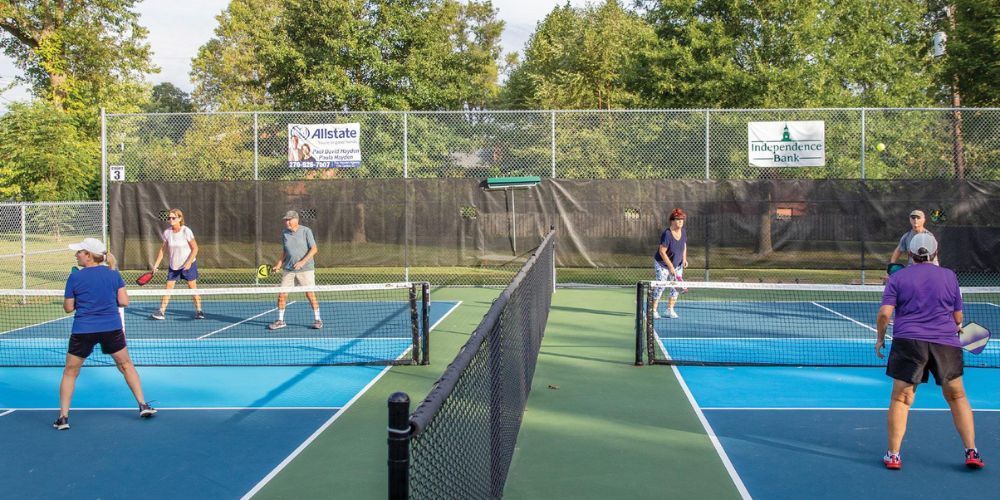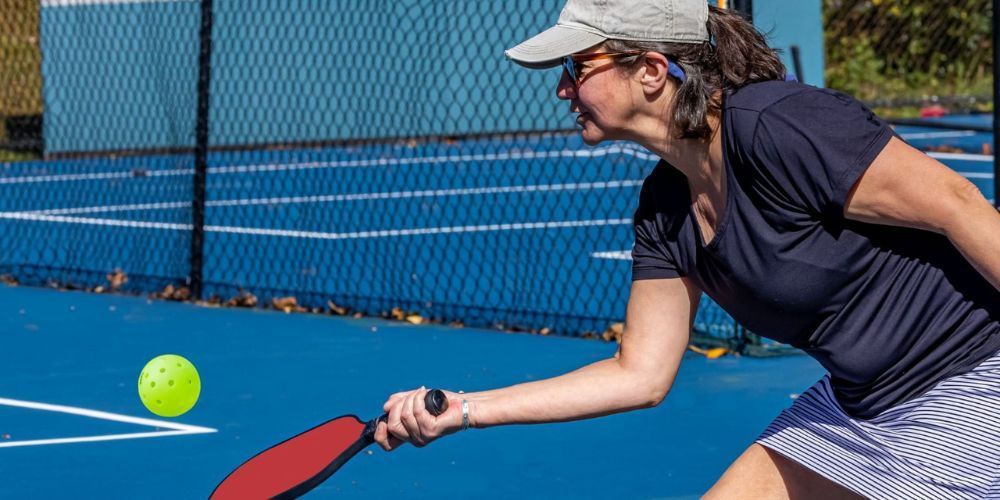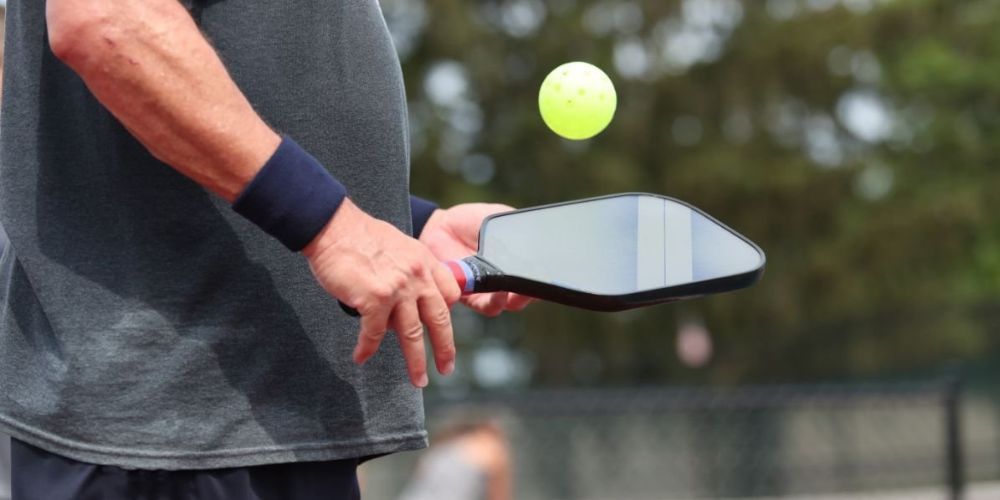Improve Your Pickle Ball Game with These 10 Beginner-Friendly Drills
August 2, 2024
Struggling to sharpen your pickleball skills and feeling inconsistent on the court? You're not alone. Many beginner players face this hurdle, but the key to improvement lies in simple yet effective drills. These 10 beginner-friendly exercises will refine your technique and help you reach new levels of gameplay.
We’ve gathered actionable, step-by-step instructions based on solid research and expert recommendations. Interestingly, even experienced players revisit these basics to maintain their sharpness. To start, enhancing your agility is essential—let's dive into an easy drill focused on speed and movement.
One example of a pickleball drill to improve your game is the "Dink and Drop Drill," which focuses on mastering soft shots close to the net. Another example is the "Sideways Dinking Drill," which helps players develop control and accuracy in their dinking technique. These structured drills are essential for beginners looking to elevate their pickleball game.

Agility Drills for Speed
In pickleball, quick and efficient movement across the court is paramount, and agility drills play a pivotal role in achieving this. The Cone Shuffle Drill is a fundamental exercise that targets and sharpens specific movements essential for effective court coverage. To begin, you'll need four cones placed approximately 10 feet apart in a square configuration.
The drill starts with the player standing beside one cone, ready to side-shuffle to the next cone. The objective is to touch the base of each cone in sequence by shuffling laterally from one cone to the next while always facing the same direction. This repetitive lateral movement enhances footwork, balance, and speed – all crucial elements in pickleball's fast-paced gameplay.
As the player swiftly shuffles from cone to cone, they should focus on maintaining a low stance with bent knees throughout the drill. This posture allows for quick, responsive movements and better stability on the court.
Tips for Effective Execution:
- Stay Low: Keeping a low center of gravity helps maintain control during quick lateral movements.
- Quick Footwork: Emphasize swift and precise foot movements while maintaining proper form.
- Balance: Focus on maintaining balance while transitioning between cones to ensure stability during rapid lateral shifts.
By incorporating drills like the Cone Shuffle into your training routine, you'll cultivate the agility needed to cover the court effectively, react responsively to opponents' shots, and improve your overall performance on the pickleball court.
Now that you've honed your agility with the Cone Shuffle Drill, let's turn our attention to strategies that can help fine-tune your shot accuracy.
Improving Shot Accuracy
Accuracy is the cornerstone of success in pickleball. It's not just about speed; it's about placing the ball precisely where you want it. That's why we'll dive into techniques that will aid you in hitting your target with finesse and control.
The "Target Shot Drill" is an excellent method to bolster your shot accuracy. Here's how to approach it:
- Target Setup: Commence by situating targets such as hula hoops or chalk circles in strategically vital spots on the opponent's court. These targets will serve as your aiming points during the drill.
- Hitting: Practice executing dinks, volleys, and groundstrokes aimed directly for these targets. The goal here is to concentrate on controlled, precise hits that land within the designated zones.
- Scoring: To gauge your progress, keep tabs on how many times you hit a target out of 10 attempts for each type of shot. This will help you identify areas needing improvement and track your progress over time.
- Repetition: Execute at least 3 rounds for each type of shot, allowing yourself to adjust and improve with each repetition.
Key Points:
- Focus on Control: Emphasize controlled hits rather than simply hitting the ball as hard as you can.
- Stance and Follow-through: Pay close attention to your stance and follow-through. Adjusting these factors can significantly impact your accuracy.
By practicing these key points in the Target Shot Drill, you'll train yourself to make precise and intentional shots, ensuring that your hits land exactly where you want them to on the court. Remember, accuracy pays off big in pickleball.
Your journey to mastering pickleball doesn't stop here. The next section introduces a set of exercises designed to elevate your teamwork and strategic gameplay.

Teamwork and Strategy Exercises
In pickleball, it's not just about individual skill; it's also about working together as a team. The "Cross-Court Communication Drill" is a fantastic exercise that hones both your communication skills and strategic positioning on the court.
Steps for Cross-Court Communication Drill:
- Partners: Find a partner who is ready to work on their communication skills and strategic play with you.
- Positioning: Position yourself so that one player is at the baseline and the other is at the net.
- Execution: The player at the baseline hits the ball cross-court, while the net player practices swiftly intercepting volleys. This requires seamless communication and quick reaction times.
- Rotation: After 5 minutes, switch positions with your partner to practice both aspects of the drill.
The purpose of this drill is not only to improve accuracy and mobility but also to help you and your partner develop coherent communication during gameplay. By practicing moving in sync with each other, you can cover each other’s weaknesses while amplifying each other’s strengths. This drill promotes teamwork, anticipation of each other's movements, and swift responsiveness - all essential elements in a successful pickleball partnership.
Key Points:
- Communication: Maintain clear, concise communication with your partner throughout the drill. Call out for the ball, acknowledge each other’s positions, and communicate your intentions smoothly and effectively.
- Synchronous Movement: Practice moving harmoniously with your partner, ensuring that you are covering vulnerable areas on the court effectively.
- Adaptable Strategy: Emphasize understanding each other's playing style, strengths, and weaknesses - this allows you to tailor your strategies to complement each other on the court.
This drill isn't just about hitting balls; it's about strengthening bonds with your teammate, learning how to anticipate each other's movements, and building trust in each other's abilities. As you incorporate these strategies into your game routine, you'll soon notice a significant improvement in both your individual skills as well as your effectiveness as a team on the pickleball court.
Mastering effective teamwork lays a solid foundation for any sport. Now, let's shift our focus to enhancing physical prowess with customized strength and endurance routines.
Strength and Endurance Routines
Executing smooth, controlled movements, staying balanced, and reacting quickly on the court requires strength and stamina. We want to build our vitality so that we can hit powerful shots, maintain vigorous rallies, and move with agility from one side of the court to the other. Each of these facets hinges on relying upon our physical stamina and might—so it's time to put some serious muscle into it.
A well-planned strength-training regimen carefully hones muscle groups needed for swift and forceful pickleball outings. A training routine usually lasts around 30-45 minutes, performed 2-3 times a week. Ideal exercises include those that improve overall body strength, mobility, and agility, likened to those needed during intense matchplay. Familiarizing ourselves with these exercise techniques prepares us for avant-garde performance.
Strength training doesn't necessarily equate to hefty barbells or complex gym equipment. Simple yet effective exercises like squats, lunges, and planks significantly bolster bodily strength—making them a perfect addition to your pickleball training routine. Gradually incorporating such uncomplicated workout moves not only fortifies muscles but also provides profound benefits in games.
For instance, executing weighted squats seamlessly integrates leg muscles, especially the quadriceps and glutes—a major driving force essential for powerful pushes during matches. Similarly, inclined push-ups enhance upper body strength while also stabilizing shoulder muscles—crucial for executing accurate shots and serves.
Moreover, alongside strength-building exercises lie endurance drills sanctioning you to harness your energy levels effectively across lengthy matches. They finely train your cardiovascular system, ensuring you possess ample stamina throughout fast-paced encounters.
Endurance activities can encompass high-intensity interval training (HIIT), jogs, and cycling—each substantially contributing toward improved stamina. As your body becomes accustomed to sustained physical activity through regular endurance training, it gradually adapts by amplifying its overall physical resilience.
Complementing these functional drills is a focus on intrinsic muscle strength development—an attribute propelling swift directional movements and robust shot-making capabilities. These exercises uncannily mimic movements facilitated frequently during aggressive net play and relentless baseline duels encountered in pickleball matches.
Strength Training: Beginner-Friendly Exercises
| Exercise | Duration | Sets & Reps | Rest Time |
|---|---|---|---|
| Squats | 10 mins | 3 sets of 15 reps | 45 seconds |
| Lunges | 10 mins | 3 sets of 12 reps each leg | 45 seconds |
| Planks | 10 mins | 3 sets of 45 seconds hold | 1 minute |
With a heightened focus on endurance routines alongside targeted strength development regimens at play, you're undeniably paving your way towards an enhanced game prowess on the pickleball court.

Transition Zone Techniques
The transition zone in pickleball presents a unique challenge, demanding quick adaptation and precise shot-making. One of the most effective drills to hone your skills in this critical area is the "Three-Corners Drill." This drill is designed to improve your footwork, agility, and shot selection in the transition zone, enabling you to maneuver swiftly and respond effectively to different types of shots.
Steps for Three-Corners Drill:
- Setup: Place cones in the left, center, and right positions of the transition zone to mark the three corners.
- Execution: Move from one corner to another, practicing controlled drop shots and transition volleys.
- Movement: Emphasize returning to a neutral position after each shot, simulating real-game scenarios.
- Cycle: Perform the drill for 5 minutes, maintaining focus on smooth transitions and shot accuracy.
Incorporating this drill into your practice routine can significantly enhance your ability to cover the transition zone effectively while controlling the pace of the game.
Key Points:
- Low Stance: Maintaining a low stance allows for quicker recovery and better balance, enabling swift reactions to opponent's shots without compromising positioning.
- Shot Control: Focus on executing soft, controlled shots during the drill to develop touch and placement precision.
By consistently integrating the Three-Corners Drill into your training regimen, you'll notice a marked improvement in your footwork, paddle control, and overall maneuverability within the transition zone. This enhanced proficiency will empower you to confidently navigate this pivotal area of the court during gameplay, elevating your performance and strategic impact.
Now that we've explored ways to master techniques in the transition zone, it's time to shift our focus towards building confidence with additional targeted drills.
Drills for Building Confidence
Confidence in any sport comes from consistent, successful execution of skills. In pickleball, this means being able to serve and return with accuracy and control. The "Serve and Return Drill" is a fantastic way to develop this crucial confidence-building skill.
Serve and Return Drill Step-by-Step
- Partner Up: Find a practice partner who can join you regularly for these drills.
- Serving: Take turns serving from either side of the court, practicing different speeds and spins to keep the returns unpredictable.
- Returning: Focus on controlled returns aimed at your partner's feet, simulating real match scenarios.
- Scoring: Keep track of successful serves and returns over 10 attempts for each side to track progress and improvement.
This drill is beneficial as it cultivates not only the ability to serve well but also emphasizes the importance of accurate returns. Both aspects are vital in a game scenario.
The key to developing confidence lies in performing the drill while paying attention to specific aspects during its execution. For instance, it's essential to practice varied serve speeds and spins to ensure versatility in your service game. This will keep opponents guessing and provide a significant advantage during matches. For returning, focusing on consistent, accurate returns helps build confidence in high-pressure match scenarios. By mastering both aspects, players are better equipped to handle different game situations with poise and precision.
Additionally, maintaining a record of successful serves and returns can serve as valuable motivation. Progress tracking enables players to see their improvement over time, reinforcing their belief in their abilities.
The Serve and Return Drill is one of the fundamental exercises that contribute significantly to building a player's confidence on the pickleball court. Regularly practicing this drill with a partner will lead to noticeable improvement in both serving and returning skills, ultimately enhancing overall game performance on the court.
By consistently honing these essential techniques, players can enter matches with greater self-assurance, knowing they have put in the necessary work off-court to handle pressure situations effectively.
Committing to targeted drills like the Serve and Return Drill lays a solid foundation for skill development and confidence-building in pickleball. The progress made through consistent practice not only enhances individual performance but also elevates the overall dynamics of the game.
What are the basic skills needed for pickleball beginners?
To get started with pickleball, beginners need to focus on a few fundamental skills:
1. Grip and Stance: The first step is learning how to properly grip the paddle and position your body. A good grip ensures better control and power, while the right stance improves balance and readiness.
2. Serve: A good serve is crucial as it starts the game. Beginners should practice both underhand and overhand serves, focusing on consistency and placement rather than power.
3. Dink Shots: Dinking is a soft shot that lands in the opponent’s kitchen (non-volley zone). It requires control and precision and is essential for strategic play.
4. Volleys: Volleys are shots hit before the ball bounces. Beginners should practice both forehand and backhand volleys to improve their quick reflexes and net play.
5. Footwork: Proper footwork helps in positioning and balance. Beginners should practice moving efficiently around the court to get into the right position for each shot.
How often should beginners practice pickleball drills to see improvement?
The frequency of practice depends on individual goals and availability, but a good starting point for beginners is:
1. Regular Practice: Aim for at least 2-3 times a week. Consistency is key to developing muscle memory and improving skills.
2. Duration: Each practice session should be around 60-90 minutes. This allows enough time to work on different drills without getting overly fatigued.
3. Variety: Incorporate different drills in each session to work on various aspects of the game, such as serving, dinking, and footwork. This keeps practice engaging and comprehensive.
4. Rest and Recovery: Ensure to have rest days in between to allow muscles to recover and prevent burnout. Physical fitness and mental sharpness are both important for improvement.
What equipment is necessary for practicing pickleball drills?
To practice pickleball drills effectively, you will need the following equipment:
1. Pickleball Paddle: A good-quality paddle suitable for beginners. Lightweight paddles with a larger sweet spot are often recommended for new players as they provide better control and ease of use.
2. Pickleball Balls: Durable and approved pickleball balls. It’s helpful to have several on hand for continuous practice without interruption.
3. Net: If you’re practicing at home or a place without a permanent court, a portable net system is essential. Regulation nets are 36 inches high at the sidelines and 34 inches high in the center.
4. Court Shoes: Proper footwear designed for court sports. These shoes offer better grip, support, and flexibility, reducing the risk of injuries.
5. Cones and Targets: Useful for setting up specific drills and marking areas on the court to improve precision and placement of shots.
Having the right equipment ensures a more effective and enjoyable practice experience, helping beginners to advance their skills efficiently.
Check out the latest guides on pickleball gear
Author: William Flaiz
All Rights Reserved | Sports and Nature Gear










